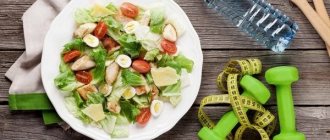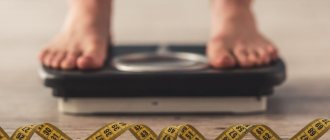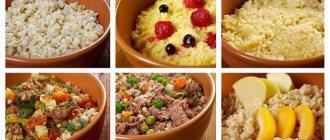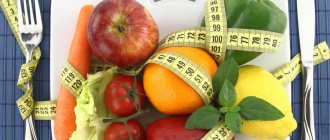In today's living conditions, more and more people are thinking about a healthy lifestyle and healthy eating. The raw food diet is a popular nutrition concept, the benefits of which have already been appreciated by many. It consists of completely avoiding the consumption of heat-processed foods. The raw food menu is a set of raw plant products. But this is not a meager and incomplete diet. Fresh vegetables, fruits, and herbs have a rich aroma and taste, and properly prepared dishes are nutritious and healthy.
Principles of raw food diet
The main law of natural nutrition is to eat at least four times a day. In this mode, the body receives the necessary charge of energy, metabolic processes are carried out, and hunger does not torment. Portions should be small. Along with main meals, snacks are allowed.
Rules for eating raw food:
- Do not wash down what you eat. You can drink it either 30 minutes before meals or 40 minutes after. Allowed drinks: pure water without carbon, herbal and berry infusions. It is allowed to replace one meal with a glass of freshly squeezed juice.
- Do not mix fatty foods with sweet ones. This combination causes fermentation in the intestines, so you should not eat nuts with dried fruits or honey, sweet fruits with avocados, etc.
- Combine sour fruits with fatty foods. So, orange harmonizes perfectly with nuts and avocado.
- Do not eat sour fruits at the same time as starchy ones. When interacting with acid, starch is poorly broken down, which can cause stomach pain, cramps and indigestion.
- Do not consume different fatty foods at the same time, for example, coconut with avocado or butter with nuts. Such combinations inhibit the absorption and digestion of food.
- Do not consume fresh fruits and dried fruits at the same time.
Authorized products:
- fresh fruits and vegetables, berries, herbs (supply the body with fiber);
- raw mushrooms grown in an environmentally friendly area;
- unroasted nuts: almonds, hazelnuts, peanuts, pistachios, walnuts (source of protein and minerals);
- sprouted seeds of wheat, buckwheat, lentils, sunflower;
- legumes: peas, lentils, green buckwheat;
- dried fruits not dried in ovens (replace fresh fruits in winter);
- seaweed (preferably dry seaweed, which is soaked before eating);
- honey;
- cold pressed vegetable oils.
It is strictly forbidden to include in the diet:
- any pickles and marinades;
- store-bought juices;
- alcoholic products;
- sparkling sweet water;
- coffee.
Permitted and prohibited products
It is advisable to engage in a raw food diet from the age of 18. This diet is not recommended for older people. The diet is prepared in accordance with seasonal harvests; in winter they eat more dried fruits.
The menu includes the following products:
- fresh vegetables;
- fruits;
- fresh and frozen berries;
- herbs (spicy, salad);
- seeds of grains, legumes, soaked in water or sprouted;
- nuts (peanuts, pine nuts, hazelnuts, almonds);
- dried fruits;
- mushrooms (freshly picked, dried, frozen);
- fresh, dried seaweed;
- honey;
- oil from plants;
- water, freshly squeezed juices.
Products are stored fresh, frozen or dried. Do not eat moldy fruits or vegetables containing chemical additives.
Be sure to read: How much protein, fat and carbohydrates do you need per day for weight loss: daily allowance
Also not included in the diet:
- preservation and pickling;
- carbonated and sweet drinks;
- packaged juice;
- coffee.
For muscle gain
The main criteria for building muscle mass will be constant training and a diet rich in protein foods. Nuts are a source of protein, but they are high in fat.
This is a difficult product to digest, so it will not meet your protein needs.
The main sources are legumes and cereals, which are well absorbed by the body. If your muscles hurt for a long time after training, you need to increase your protein intake. Full meals 4-5 times a day. With heavy loads, the volume of food increases.
For weight loss
If the goal of a raw food diet is to lose extra pounds, then the menu is different. Nutritionists do not advise eating a lot of sweet fruits (bananas, grapes) and reducing the amount of dried fruits and nuts.
If the goal of a raw food diet is to lose extra pounds, then the menu is different
They refuse corn - a source of energy. A full two-course meal is reduced to one.
Transition to a raw food diet and nutritional habits in winter and summer
To start eating a raw food diet without harming your body, you should follow the recommendations of qualified doctors and experienced raw foodists.
Before refusing to eat thermally processed foods, you should consult your doctor: a raw food diet is contraindicated in some serious diseases.
To make the transition minimally stressful, at the initial stage you should give up meat and fish and switch to vegetarianism. When the body gets used to this regime, they switch to a full diet of raw vegetables and fruits.
It is important to monitor the water-salt balance. To do this, you should drink more than two liters of water per day. The daily food composition must be carefully selected so that the body has enough necessary vitamins, microelements, protein and carbohydrates (percentage ratio: 17 - fats, 73 - carbohydrates, 10 - proteins).
It is advisable to start a raw food diet in the summer and autumn, when fresh fruits, vegetables and herbs are in abundance, the products are not poisoned by pesticides and other substances, and are therefore healthy. But what to do in winter and spring, when you can no longer take vegetables directly from the garden?
- For the winter-spring period, stock up on vegetables as much as possible.
- Eat more fats contained in sunflower seeds, nuts, and various oils.
- Make some herbs (they can be stored in small bags in the freezer): parsley, dill, cilantro, lettuce. It can also be dried.
- Drink only warm drinks. The temperature should be about 40 °C. To maintain it, use a thermos.
- Eat more dried fruits because they have enough vitamins to replace fresh fruits.
- Use various spices as seasonings: cinnamon, cloves. They will keep you warm in the cold winter.
Proper raw food diet
First of all, I would like to draw your attention to the fact that raw foodists should eat at least 4 times a day. Such a diet is very important for proper metabolism, adequate energy production and the absence of hunger.
The last aspect is especially important. If a person is constantly hungry, then sooner or later nature will still take over and a breakdown will occur. After which the body will suffer even more.
Some raw foodists, and especially fruitarians, eat almost non-stop, but in small portions. For raw foodists, meals can be either main meals, during which they consume the largest amount of calories per day, or snacks.
Secondly, raw foodists never wash down their food. They drink only clean, still water. Infusions of various herbs and berries, which can be taken either half an hour before meals or forty minutes after it.
In their opinion, drinking water during meals further stretches the stomach and leads to increased gas formation. In addition to water and infusions, raw foodists drink freshly squeezed juices daily, which replace one meal or snack.
Nuts play an important role in saturating the body with vegetable protein, minerals and unsaturated fatty acids.
These can be any nuts:
- cashew nuts,
- almond,
- walnuts,
- cedar,
- hazelnut,
- hazelnut
- and pistachios.
Peanuts are considered to be a nut, although this plant is a legume.
It is important to remember that raw foodists eat everything exclusively raw. So, nuts like
- pistachios,
- cashew nuts,
- almond
- and peanuts
You only need to buy raw. Roasted nuts are no longer beneficial and are not included in the raw food diet.
In addition to nuts, raw foodists love to add apricot kernels to their food. They have an indescribable aroma and taste, and are also full of vitamins, minerals and healthy oils.
Creating a menu for the day
When compiling a daily diet, the following condition is met: different food groups are consumed separately. Eat sour fruits first. It is allowed to swap nuts with vegetables: such a replacement will not cause fermentation.
The order of products must be taken into account:
- fruits or starchy ones, and then nuts;
- fruits are starchy;
- sour - starchy;
- fruit, and then dried fruit.
Daily ratio of products: 45 percent fruits and berries, 35 percent vegetables, 10 percent starchy foods, 9 percent dried fruits, nuts and honey, 1 percent seasonings.
A sample daily menu includes a breakfast of fruit, a light lunch of salad and sprouted grains, and a dinner of legumes or root vegetables. Lunch and afternoon snacks consist of nuts or dried fruits, and for dessert, halva made from pistachios and sunflower seeds, prepared independently, is allowed.
What can a raw foodist drink and what can’t he?
A raw foodist should not forget about drinking. Let me tell you what raw foodists drink and what they shouldn’t drink. Let's start with the allowed list.
What can a raw foodist drink?
1. Of course, the main drink is clean water, never boiled. It is better not to drink bottled water; most mineral water is also not healthy.
The best water is from a clean, personally tested source or well. But, unfortunately, not everyone has the opportunity to drink such water. But there is a way out!
Of course, you cannot drink tap water from the tap. It must be cleaned before use. For example, you can cleanse with shungite. Clean water is the source of life.
Some raw foodists don't drink water, but this is a mistake. They motivate themselves by the fact that there is enough water in fruits and vegetables. Yes, this is true, but in fact we need water to cleanse the body. Especially in the first year or two of a raw food diet, when old waste and toxins are actively eliminated.
2. Also, many raw foodists drink juices. Fruit, vegetable, fruit and vegetable. They are all useful. It is important to consume juices immediately after preparation. This will help the body get the maximum vitamins. Good juices are made using a raw foodist technique - an auger juicer.
Another option is to make fruit water. It’s easy to prepare: squeeze the juicy fruit into water prepared in advance. For example, lemon water is made from lemon, you can add ginger root. Or you can simply dissolve a spoonful of honey in water, you get honey water.
3. Cold herbal teas and infusions are also good drinks for a raw foodist. These are not the teas that are sold everywhere. Raw foodists have their own teas. Some are used for prevention and cleansing, others - as a drink for every day.
It is best to infuse herbal teas in the sun, so they absorb its energy and transfer it to us. You can read how to prepare this tea correctly here.
Of course, some herbs have contraindications and are not suitable for everyone, so you need to use them carefully and wisely. Personally, Pelagia and I are always helped in matters of herbal preparations by her mother, a botanist; she has more than 40 years of experience.
4. A raw foodist can also drink raw fruit compotes, coconut water, and a variety of refreshing and warming drinks prepared according to raw food recipes. You can cook a lot of things, you just need to not be afraid and try.
Here is a list of what you can drink as a raw foodist. Friends, perhaps you have something to add? Tell us what you drink on a raw food diet, share your experience. Now let’s move on to the fact that a raw foodist should not drink.
List of dishes for the week
For a person practicing a raw food diet, the weekly menu should consist of a variety of products, taking into account all the recommendations and restrictions presented above.
1st day
For breakfast - 2 bananas, kiwi with three oranges.
A handful of nuts is good for lunch.
For lunch - green buckwheat with cucumber salad with the addition of tomatoes, peppers, onions, and olive oil.
For an afternoon snack - a handful of dried fruits.
Dine with a glass of smoothie (tomatoes with avocado, seasoned with basil or parsley) with bread.
2nd day
Breakfast: salad of three small grated apples with raisins and honey.
Lunch: freshly pressed vegetables or fruits.
Have lunch with raw carrot cutlets with sprouted wheat grains.
For an afternoon snack - cabbage salad with cucumbers and herbs; you can season it with flaxseed oil and lemon juice.
For dinner - berry and fruit salad.
3rd day
Breakfast consists of soaked oatmeal flakes with berries and mango fruit.
Lunch - half a glass of nuts.
Lunch is hearty, made from sprouted lentil grains and a salad of cauliflower, peppers, broccoli, seasoned with sesame oil or sprinkled with sesame seeds.
Have pumpkin porridge with seeds for dinner.
4th day
We have breakfast with 1 glass of banana smoothie with the addition of strawberries and kiwi.
Lunch - 150 grams of sunflower seeds.
Lunch - creamy vegetable soup with onion-based raw food bread.
Afternoon snack - several fresh watermelon or melon slices.
We have dinner with a salad of seaweed, onions, and broccoli, dressed with flaxseed oil.
5th day
For breakfast, 100 grams of currants or strawberries.
For lunch - 100 grams of nuts.
For lunch - pumpkin gruel with pine nuts and a side dish of zucchini salad and various greens.
For afternoon snack - dates.
For dinner - salad: arugula, sesame seeds, cauliflower, tomatoes and olive oil dressing with lemon juice; raw food bread.
6th day
Breakfast: pieces of watermelon with strawberries and currants.
Lunch: cucumbers with garlic and dill.
Lunch: side dish of sprouted wheat grains and cabbage-carrot salad, seasoned with sesame oil.
We'll have a green squash cocktail with dill, parsley and sorrel leaves in the afternoon.
Dinner: soaked seaweed, sprinkled with sesame oil.
7th day
We have breakfast with apples stuffed with a mixture of dried fruits.
For lunch - freshly squeezed fruit and berries.
We have lunch with a side dish of sprouted chickpeas, a salad of champignons, onions, tomatoes and cauliflower with olive oil dressing.
We have an afternoon snack with zucchini salad and carrots, Korean style.
We have dinner with pieces of various vegetables, seasoned with a sauce made from pureed nuts.
Basic products of raw foodists
A raw food diet is essentially very similar to vegetarianism, but the main difference is that pickled, fermented or heat-treated foods are prohibited.
List of permitted products:
- all types of fresh vegetables, fruits and berries;
- raw seeds and nuts;
- cereals and legumes (sprouted or pre-soaked);
- dried fruits;
- nut milk;
- any oils of vegetable origin;
- algae and sprouts;
- mushrooms, greens;
- honey and pollen;
- seasonings (without synthetic additives).
You can add vanilla extract, apple cider vinegar, raw cocoa and desiccated coconut to add flavor to your dishes.
For reference: experts advise to diversify your food with sour cream from seeds, which must be thoroughly crushed, then whisked with water and any vegetable oil .
Raw food recipes
Creamy vegetable soup recipe
This soup is prepared quickly and simply; any beginner raw foodist can easily prepare it. Using a blender, puree the onion, cauliflower and carrots, young peas, celery stalks and parsley to a puree consistency. Pour everything into a plate, sprinkle with cedar nuts or pumpkin seeds, which will add piquancy to the dish. The cream soup is ready to eat.
Smoothies from vegetables and fruits
Smoothies are the healthiest snack possible. Vegetables and fruits combined in one smoothie add piquancy to the dish. To prepare it, you should take washed celery stalks, orange and kiwi without peel, and apples. Everything is whipped with a blender until smooth.
Pumpkin porridge
Pumpkin is rich in vitamins, minerals and fiber. The porridge is prepared by grinding peeled and seeded pumpkin in a blender or meat grinder. To sweeten the dish, you can add honey. This porridge is seasoned with linseed oil and sprinkled with raw pumpkin seeds.
Anyone who wants to become a real raw foodist and improve their body health will be able to choose for themselves many recipes that will be as tasty and healthy as possible.
A raw food diet is not just a diet that helps you adjust your weight and get rid of extra pounds. This is a real life philosophy. The diet of a raw foodist is varied and beneficial for beauty and the body as a whole.
Video: Doctors' reviews about raw food diet
Doctors say that a raw food diet, like a coin, has two sides. Before abandoning the heat treatment of foods and the traditional way of eating, you should carefully study the issue of a raw food diet for weight loss, its likely consequences and contraindications. Carefully weigh the pros and cons, take into account the risks, compare them with the benefits before starting the diet, watch a video that will answer some questions.
Cleanse on a raw food diet
About the most important thing: Detox diet
Detox diet
About the most important thing: Detox diet
How to safely switch to a raw diet
Having made an unconditional decision to eat exclusively raw foods, you need to approach the transition from your usual diet to a raw food diet with full responsibility.
There are 2 methods of switching to a raw food diet:
- smooth;
- cutting.
With the abrupt method, a person must give up his usual food in one day. It is very difficult both mentally and physically. This method may be suitable for those who adhere to a healthy diet in their usual life. However, it is absolutely not suitable for people who are used to eating high-calorie foods. For them, the best option is a smooth transition.
In the first stages of a raw food diet for weight loss, you need to gradually increase the amount of raw food, while not giving up cereals and drinks. This will prevent much damage to the digestive system.
In order to feel good and not harm the body, you should adhere to certain recommendations:
- get used to combining products correctly;
- get a good night's sleep;
- divide meals into 5-6 times;
- drink enough liquid (clean filtered water) per day;
- eat in moderation, do not overdo it;
- Before switching to this diet, consult your doctor.
Myths and reality
Myth #1: Raw food contains enough nutrients to keep you healthy.
Unfortunately, 100% adherence to a raw food diet will lead to the fact that a person will no longer receive the required amount of protein, B vitamins, zinc, selenium and vitamin D. In particular, a lack of vitamin B12 leads to anemia, heart disease, damage to the nervous system, threatens infertility and problems with bones.
Large amounts of protein are found in fish, poultry (chicken, turkey), eggs, nuts and legumes, and low-fat dairy products (for example, yogurt, milk). B vitamins play an important role in cellular metabolism and are mainly found in:
- liver, meat, kidneys (B3 is involved in the synthesis of fats and proteins);
- fish caviar, heart, kidneys, egg yolks, yeast (B5 - in the synthesis of antibodies);
- boiled eggs, liver, kidneys, meat and dairy products (B7 - in the synthesis of glucose, amino acids and fatty acids);
- products of animal origin: liver, yolks, fermented milk products (B12 - in the formation of red blood cells, responsible for the functioning of the nervous system).
Selenium ensures the health of the thyroid gland and is found in large quantities in turkey and duck liver, and chicken eggs. Zinc takes part in many metabolic processes and is found in sufficient quantities in beef, lamb, pork, processed cheese and liver.
As for vitamin D, this biologically active substance is synthesized in our skin under the influence of ultraviolet radiation and ensures the absorption of calcium and phosphorus. This vitamin is found in small quantities in foods of animal origin. For example, in fatty fish, egg yolks, butter, cheese. If there is a lack of sunlight, it can be obtained from food. However, its intake only from the listed food products is still not able to provide the daily requirement, and even more so from food of plant origin.
American scientist Don Bennett wrote in his publication “Cancer Prevention and Vitamin D” that vitamin D is a nutrient that cannot be obtained from natural, unprocessed, healthy foods.
Proctologist at the medical ]“ON Clinic Dnepr”[/anchor] Anna Rufanova says:
“Raw vegetables contain difficult-to-digest fiber, which is broken down only in the intestines. During heat treatment, fiber softens, which facilitates the functioning of the gastrointestinal tract. If there are problems with the intestines, raw foodists are often diagnosed with flatulence and intestinal diseases.”










